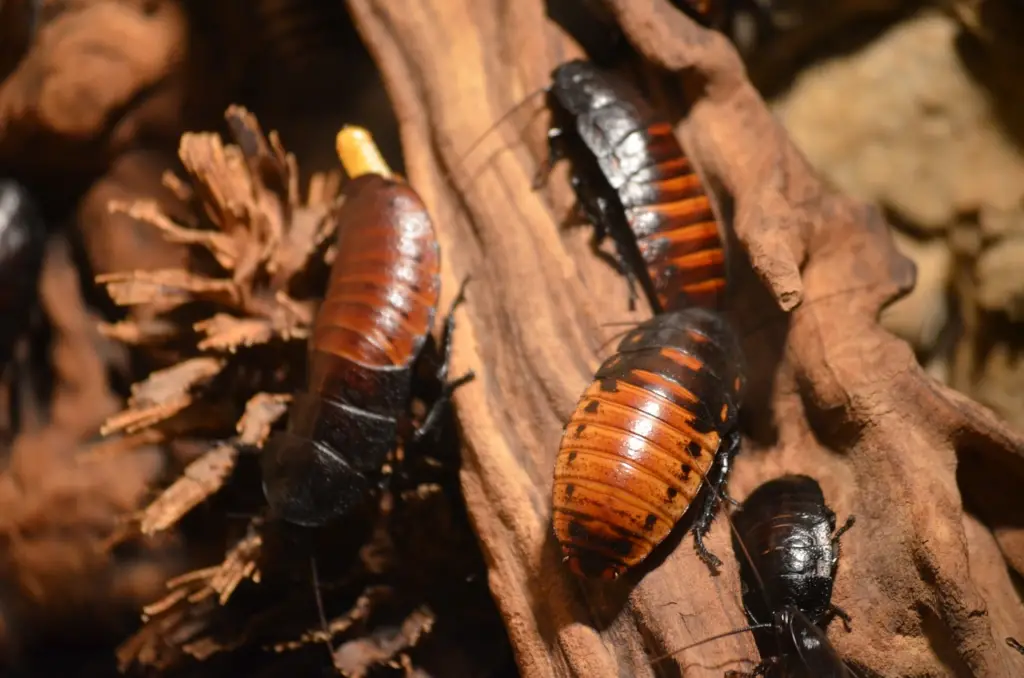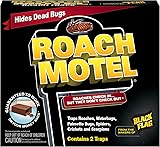Pest Lockdown
Why Do Cockroaches Die on Their Back and In The Open?
The sight of a lifeless cockroach, sprawled upside down, is a common household occurrence. But have you ever wondered why these resilient insects seem to always meet their demise in such a peculiar position? This article delves into the fascinating science behind why cockroaches die on their backs and often in the open, leaving you better equipped to understand (and eliminate) these unwelcome guests.
Top-Heavy Trouble: The Roach’s Unbalanced Design
The key to this morbid mystery lies in a combination of cockroach anatomy and physiology. Unlike humans with a low center of gravity, cockroaches are top-heavy creatures. Their flattened bodies, ideal for squeezing into cracks and crevices, are supported by long, spindly legs. This arrangement places most of their weight on their backs, making them inherently unstable.
Imagine a seesaw: the heavy end dips lower. Similarly, a dying cockroach’s weakened muscles struggle to maintain its usual posture. This top-heaviness makes them more susceptible to tipping over, especially on smooth surfaces like floors or countertops.

How Different Causes Lead to Cockroaches Dying on Their Back
There are two main reasons why cockroaches might end up on their backs: natural causes and insecticide exposure.
- Natural Causes: As a cockroach nears the end of its natural lifespan, its body functions begin to decline. Muscles weaken, and the nervous system deteriorates. This loss of control, combined with the roach’s top-heavy build, can lead to a fatal flip.
- Insecticide Exposure: Many insecticides work by disrupting the nervous system of insects. This disruption can cause uncontrollable muscle spasms and tremors, often causing the roach to flail and thrash around. In this state, the roach’s high center of gravity and weakened muscles make it difficult to right itself, leading to an upside-down demise.
Do All Cockroaches Die On Their Back?
It’s important to note that not all cockroaches die on their backs. In the wild, they often succumb to predators or diseases, ending up in various positions. Similarly, if a roach dies in a tight crevice or under an object, it may not be able to flip over. However, in open areas frequented by humans, the backstroke scenario is more likely to play out.
Why do Roaches Die Out in the Open?
Another intriguing aspect of cockroach death is their tendency to die in exposed locations. This might seem counterintuitive, as these light-averse creatures typically prefer dark, hidden spaces. Here’s the reasoning behind this seemingly illogical behavior:
Last Stand for Fresh Air
As a cockroach nears death, its oxygen needs may increase. In a desperate attempt to breathe, it might crawl out of its usual hiding spot and towards a light source or an area with better air circulation. This explains why you might find dead cockroaches near windows or vents.
Escape the Nest
When a roach is sick or dying, its colony mates may detect its weakened state and expel it. This behavior, known as “social eviction,” ensures the overall health of the colony. Driven out of its safe haven, the dying cockroach ends up exposed.
Lethal Leftovers
Insecticides often don’t kill cockroaches instantly. The poisoned roach might crawl out of its hiding place in a disoriented state, eventually succumbing to the poison in the open. These factors contribute to the phenomenon of finding deceased roaches in seemingly random, exposed locations.

Preventing the Roach Backstroke: Keeping Your Home Roach-Free
Now that you understand the reasons behind the upside-down demise of cockroaches, you can take steps to prevent these unwanted guests from taking their final flip in your home. Here are some effective strategies:
- Seal Entry Points: Cockroaches are excellent at squeezing through tiny gaps. Inspect your home for cracks around pipes, doors, and windows, and seal them using caulk or weather stripping.
- Maintain Cleanliness: Cockroaches are attracted to food debris and moisture. Regularly clean your kitchen and bathroom surfaces, and dispose of garbage properly in sealed bins.
- Store Food Properly: Keep food items in airtight containers to prevent them from attracting roaches. Don’t leave dirty dishes piled up in the sink overnight.
- Natural Repellents: While not a foolproof solution, some natural substances like bay leaves, diatomaceous earth, and essential oils like peppermint can deter roaches. Place them strategically around potential entry points.
- Consider Professional Help: If your cockroach problem persists, consider hiring a professional pest control service. They can use targeted pesticides and traps to eliminate the infestation effectively.
What You Can Determine From a Dead Roach on Its Back
Finding a dead cockroach can be unsettling, but it can also provide valuable information about the state of your potential infestation. Here’s how to interpret the position and condition of the deceased roach:
Location of the Dead Roach
As mentioned earlier, dead roaches found in exposed areas might be a sign of a dying roach expelled from its colony or one seeking fresh air in its final moments. Alternatively, if you find them near baseboards or corners, it could indicate a hidden infestation behind walls or cabinets.
Quantity of Dead Roaches
A single dead roach might be a random occurrence. However, multiple dead roaches, especially in a concentrated area, suggest a larger infestation in its early stages. Early detection and intervention are crucial to prevent the population from exploding.
Condition of Dead Roaches
A healthy-looking roach found on its back is likely a victim of natural causes or a recent insecticide application. However, a discolored or visibly injured roach might have succumbed to disease or internal injuries, suggesting a weakened colony.
Remember, a single dead roach isn’t necessarily a cause for panic. However, it’s a good reminder to be vigilant and implement preventive measures. If you find multiple dead roaches or suspect a larger infestation, don’t hesitate to contact a professional pest control service. Alternatively, consider DIY pest control solutions, by trying one of these products that we have tested and love:
Sale
Hot Shot MaxAttrax Roach Bait 12 Count, Child-Resistant Bait Stations
- Item Package Dimension: 8.4599999913708L x 5.8699999940126W x 1.649999998317H inches
- Item Package Weight – 0.220462262 Pounds
- Item Package Quantity – 1
- Product Type – PEST CONTROL DEVICE
Sale
Maxforce FC Magnum Roach Gel Bait (Two 33g Tubes)
- For use in: indoors or outdoors, in commercial or residential areas. Keep tightly capped and use within 2 years.
- Application: Do not spray near baits, do not use heavy detergents or cleaners, or do not use in very dusty area.
- Gel will dry out and get a dry skin on top but roaches will still eat it up to a year. However, if contaminated or gone, reapply.
- Pet safe: yes, when used as directed ALWAYS READ THE LABEL BEFORE USE!!
- KILLS ON CONTACT: Hot Shot Fogger With Odor Neutralizer kills on contact and controls heavy infestations – and keeps killing for up to 2 months.
- KILLS HIDDEN BUGS: Creates a fine, penetrating mist that reaches deep into cracks and crevices to kill the bugs you see and kill the bugs you don’t see.
- WHERE TO USE: Use in enclosed spaces such as apartments, attics, basements, barns, boat cabins, cabins, campers, crawl spaces, garages, homes, households, sheds, storage areas and trailers.
- NON-STAINING: This clear, non-staining formula won’t leave a wet, messy residue.
- EACH CAN COVERS 2,000 CU FT: Treats 2,000 cubic feet of unobstructed space
Black Flag Roach Motel Insect Trap, 12-Pack 12 Pack Trap
- EFFECTIVE CONTROL: Traps roaches, waterbugs; Palmetto bugs; spiders; crickets and scorpions
- HIDES DEAD BUGS: Conceals dead insects – just throw trap away when full
- PESTICIDE FREE: Contains no pesticides and no pesticide fumes or odors
- ATTRACTS ROACHES: Special lure attracts roaches into the trap; where they become stuck to the glue surface
- GUARANTEED: Guaranteed to work or your money back – see product label for details
Final Thoughts
Understanding the reasons behind the cockroach’s backstroke not only satisfies your curiosity but also empowers you to take action. By implementing preventive measures and interpreting the signs left behind by deceased roaches, you can keep your home free from these unwelcome guests. Remember, a proactive approach is the best way to ensure you stop finding dead cockroaches (or even worse; alive ones)!
Frequently Asked Questions
Can cockroaches die on their stomach?
Absolutely! While the backstroke is common, roaches can die in various positions, especially in the wild or cramped spaces, where flipping over might be impossible.
Why don’t cockroaches hide before they die?
Cockroaches near death might prioritize getting air over hiding. They might crawl towards light or open areas to breathe, or their colony might expel them to avoid spreading illness.
Is a single dead roach a sign of an infestation?
A single dead roach might be a fluke, but multiple dead roaches, especially clustered together, suggest a growing infestation. Early action is key to prevent the population from exploding.
Do dead cockroaches attract other roaches?
Yes, unfortunately. Dead roaches emit pheromones that can attract other roaches looking for a food source or potential mates. This is why prompt disposal is important.




